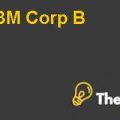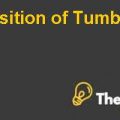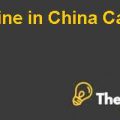
Introduction
In early days of industrialization, people were not given proper training to perform their tasks as organization were only focusing on production. Employees had never been focused and empowered by the top management. There was a time when employees were not able to get their work done without the assistance of their supervisor. With the passage of time, organizations have started to pay focus on employees’ empowerment. Organizations are paying more and more attention on team building. Employees are being given training to work in a team. After training, employees will be motivated to work on their own or without the assistance of supervisors.
Self-Directed Work Force
Self-directed work force is a concept in which employees have the same skills and they have the same purpose. These employees work for the same goals and they do not require managerial supervision. There are number of teams in an organization and each team has different objectives.
Q1. (A) Solution
Support worker was selected as “A” job. This job was selected from the case “PPG: Developing a Self-Directed Work Force (A)”. That employee fulfilled the requirement of “A” job. Support worker did not have the same skills as compared to technicians but both support workers and technicians had the same job description. Support workers were not expected to involve in the decision making. Numbers of support workers were high as compared to technicians. Support workers were given more training as compared to technicians. After that training they were able to work without managerial assistance. Support workers and technicians were supposed to work themselves. Employees were given training of every job. They knew how to repair a particular machine and they were able to perform every job. They did not need any supervision from their managers or supervisors. These workers consisted of different teams and every team had different objectives to achieve.
Q1. (B) Solution
Human resource department played a very important role in the formation of self-directed work force. Human resource department was supposed to hire the best candidate. Every candidate was supposed to go through three simulation process. Human resource department’s objective was to find those candidates who were able to make decision, who were able to work in a team, who had problem solving skills and who were able to organize their work. In order to find the best candidate, eight dimensions of employee performance were identified to hire such a candidate (See Figure - 1).
Self-directed work force concept was introduced to all technicians and support workers. In the case of PPG industries, Shafer was contacted to manage those employees. It was suggested by him to use situational leadership style. In different situations, different leadership styles could be used. Directive approach was good for beginners. It could be the best when employees have high commitment but have low competency. Coaching style was best for those employees, who had some experience but they needed some supervision. It could be the best when employees have low commitment but have some competency.
Supporting style was best for those employees, who did not require any direction but require some support from the facilitator. It could be best when employees have low commitment but have some competency. These employees had moderate commitment and high competency. The last style was delegating. In this situation, employees were very highly committed and had high competency. Human resource department managed those employees by following those leadership styles. Initially, full support was given by engineers and co-ordinators but with the passage of time employees had been enabled to perform all activities. It helped engineers and co-ordinators to pay more focus on other projects.
Q1. (C) Solution
Yes, it helped to get high performance from employees. Because of that approach, engineers and co-ordinators were able to spend 50% of their time on other issues like operational issues. Safety records got better. Quality of the product had been improved and productivity also increased.
There were several reasons behind that high performance. High performance was achieved because of common purpose in the team. Employees had the same goals. If anything went wrong, then the whole team was accountable. It motivated every employee in the team to give his best. Reward was another reason for high performance, which was given on the basis of team performance. Employees were able to change production schedule. These were the key points that helped employees to perform well. If any employee had any issue, then he was guided by his team members. So every member had full support from their team members.
There were other reasons for high performance. Different leadership styles were being used by the management. If any employee was new, then full support as well as complete direction was given to that new employee; which helped the new employee to perform well. If the employee had enough experience, then he was supposed to give no direction or any sort of support..................
This is just a sample partial case solution. Please place the order on the website to order your own originally done case solution.













